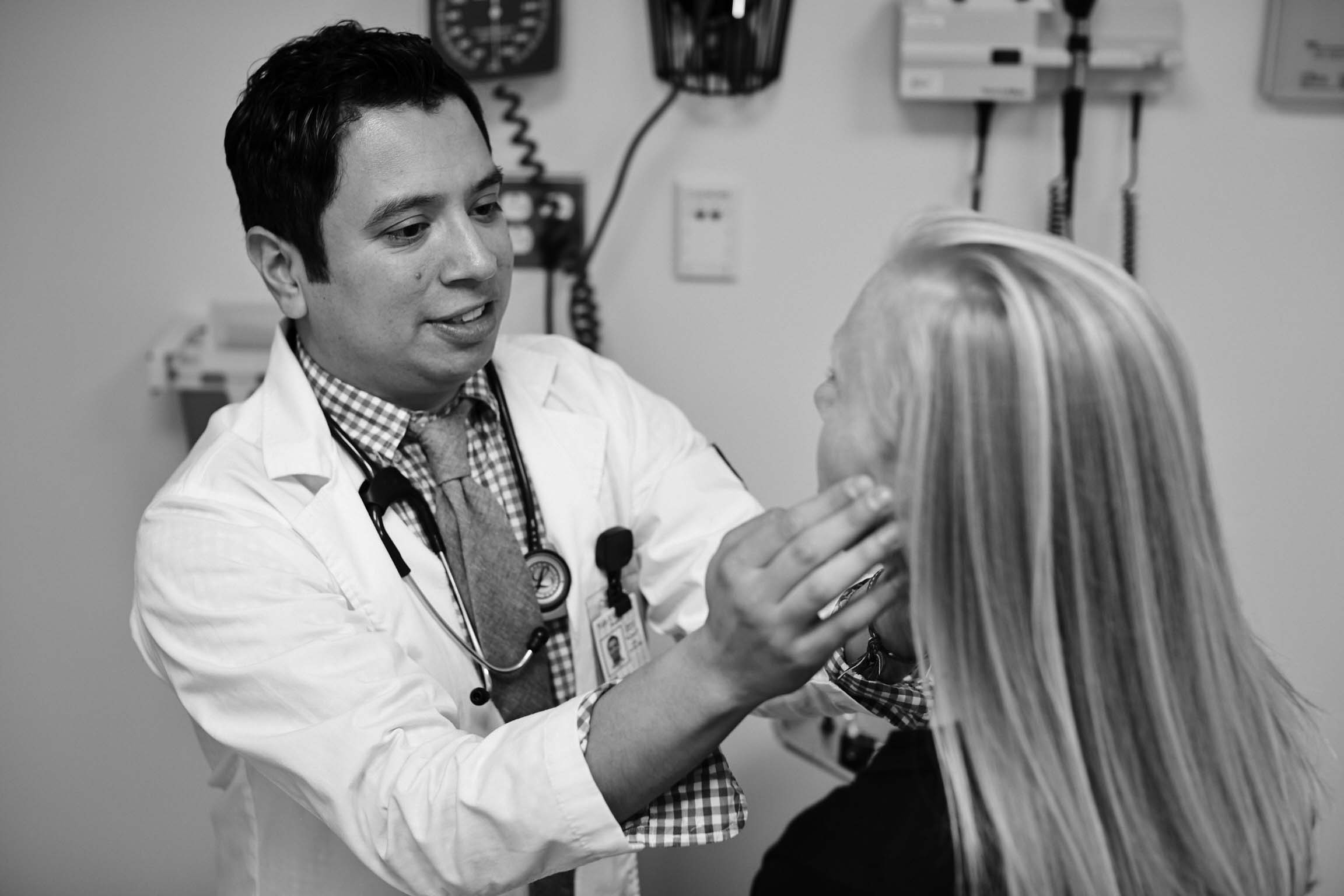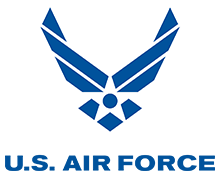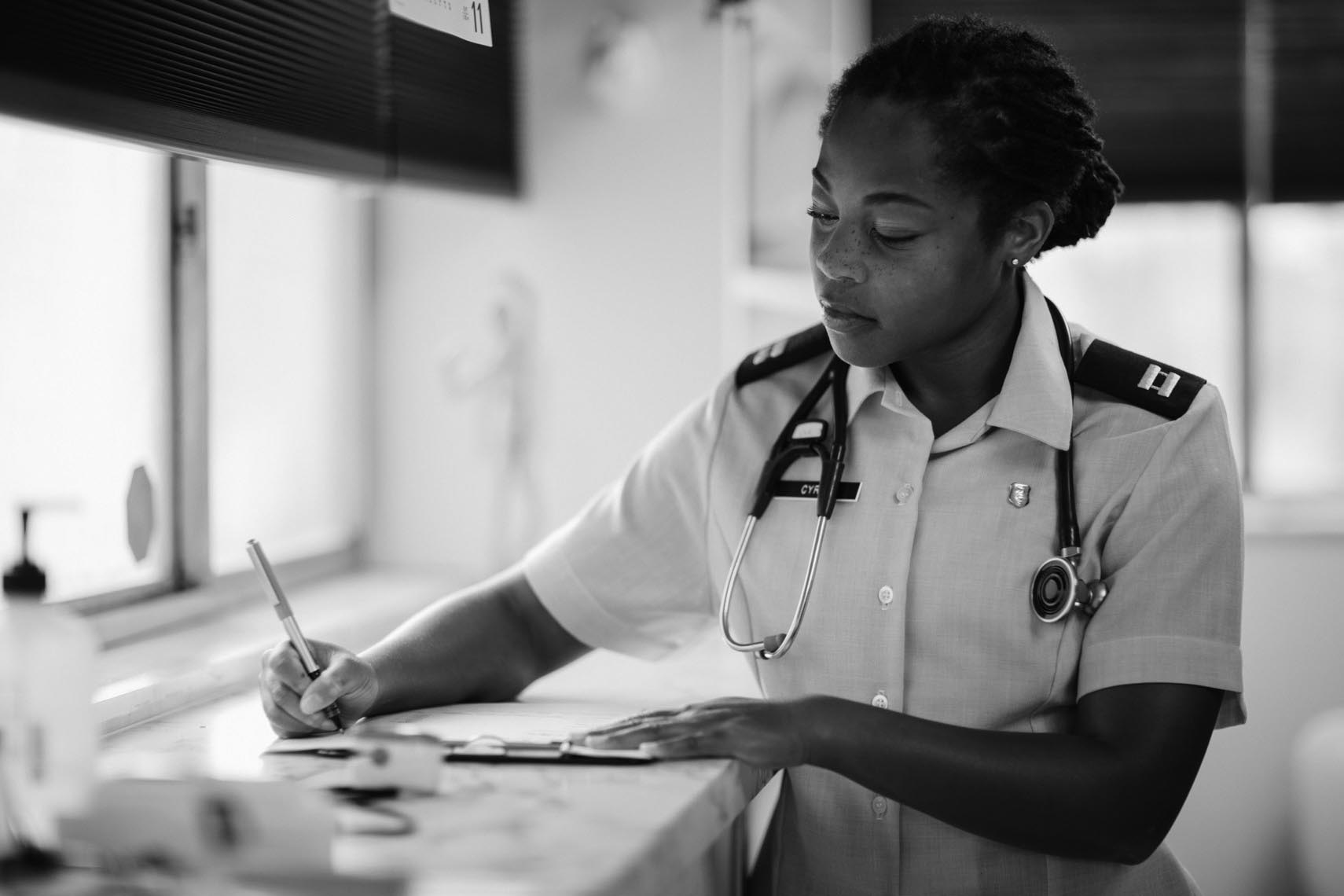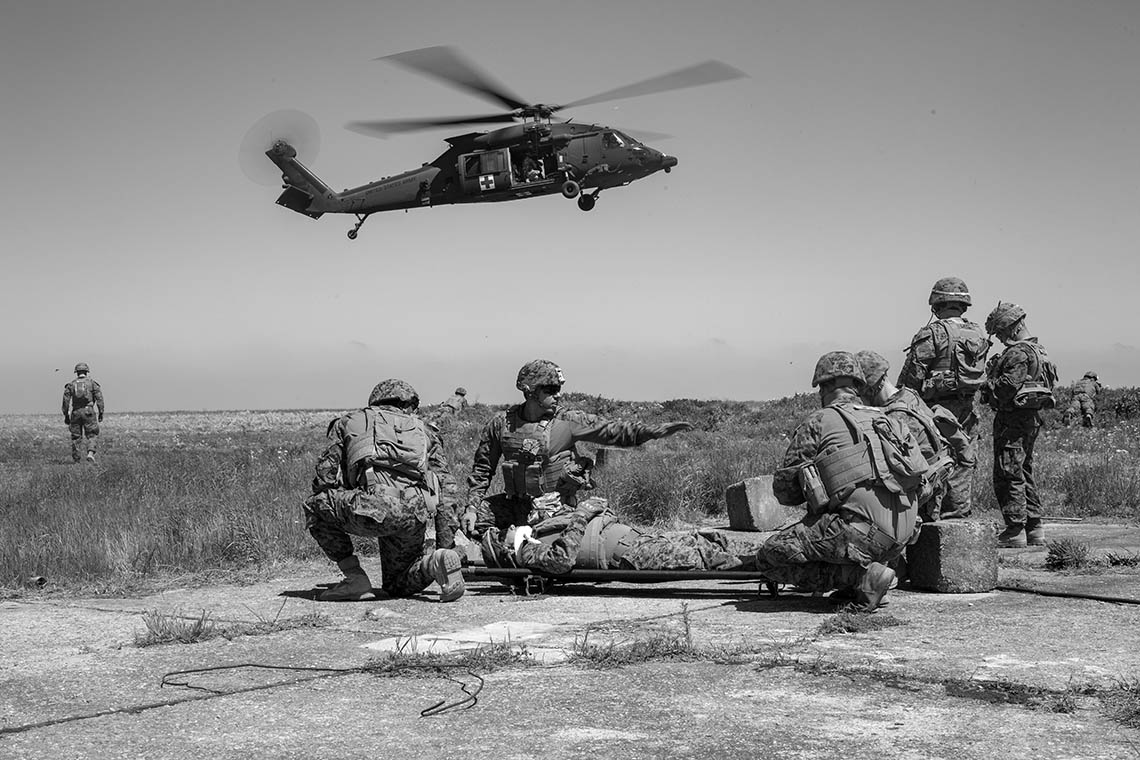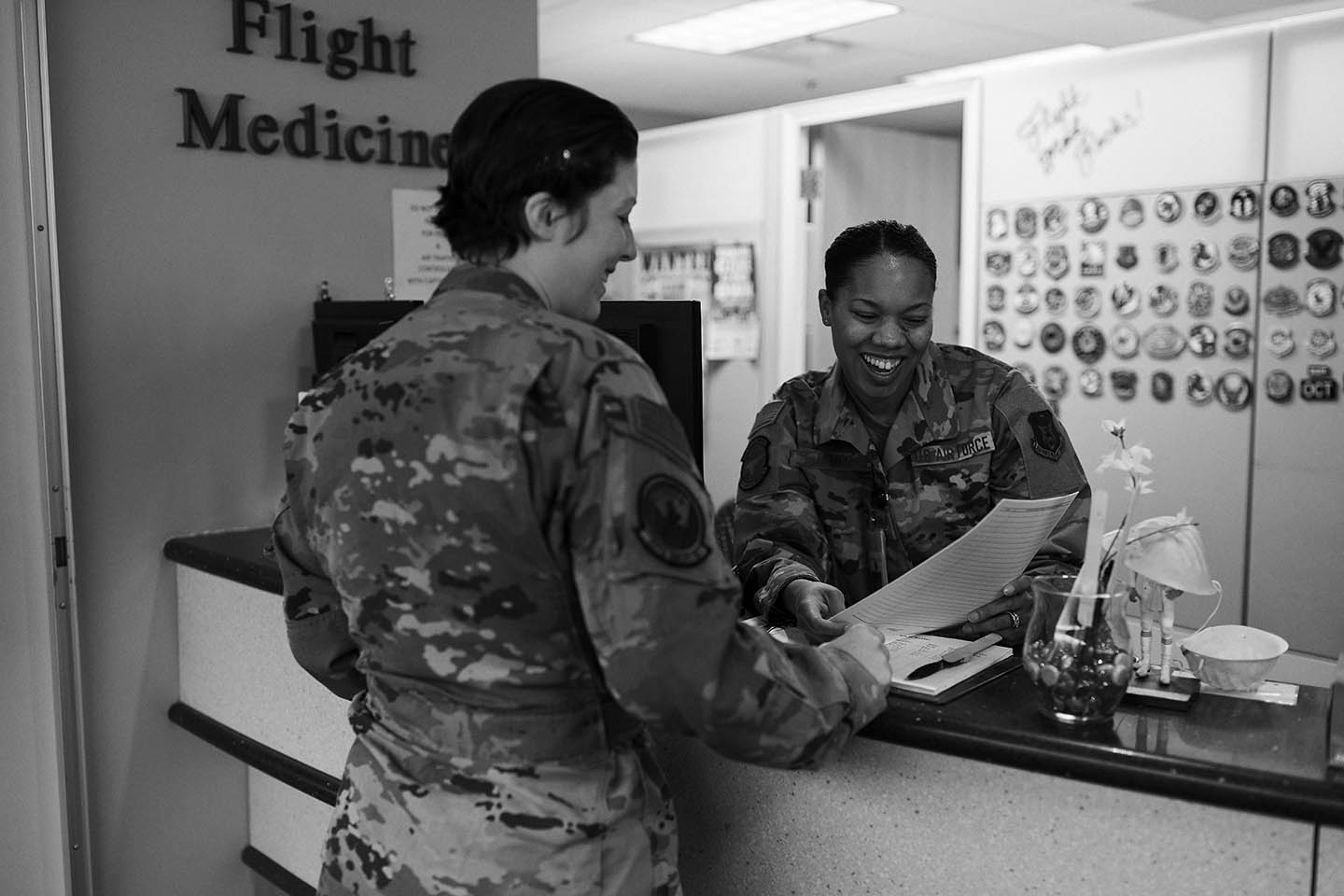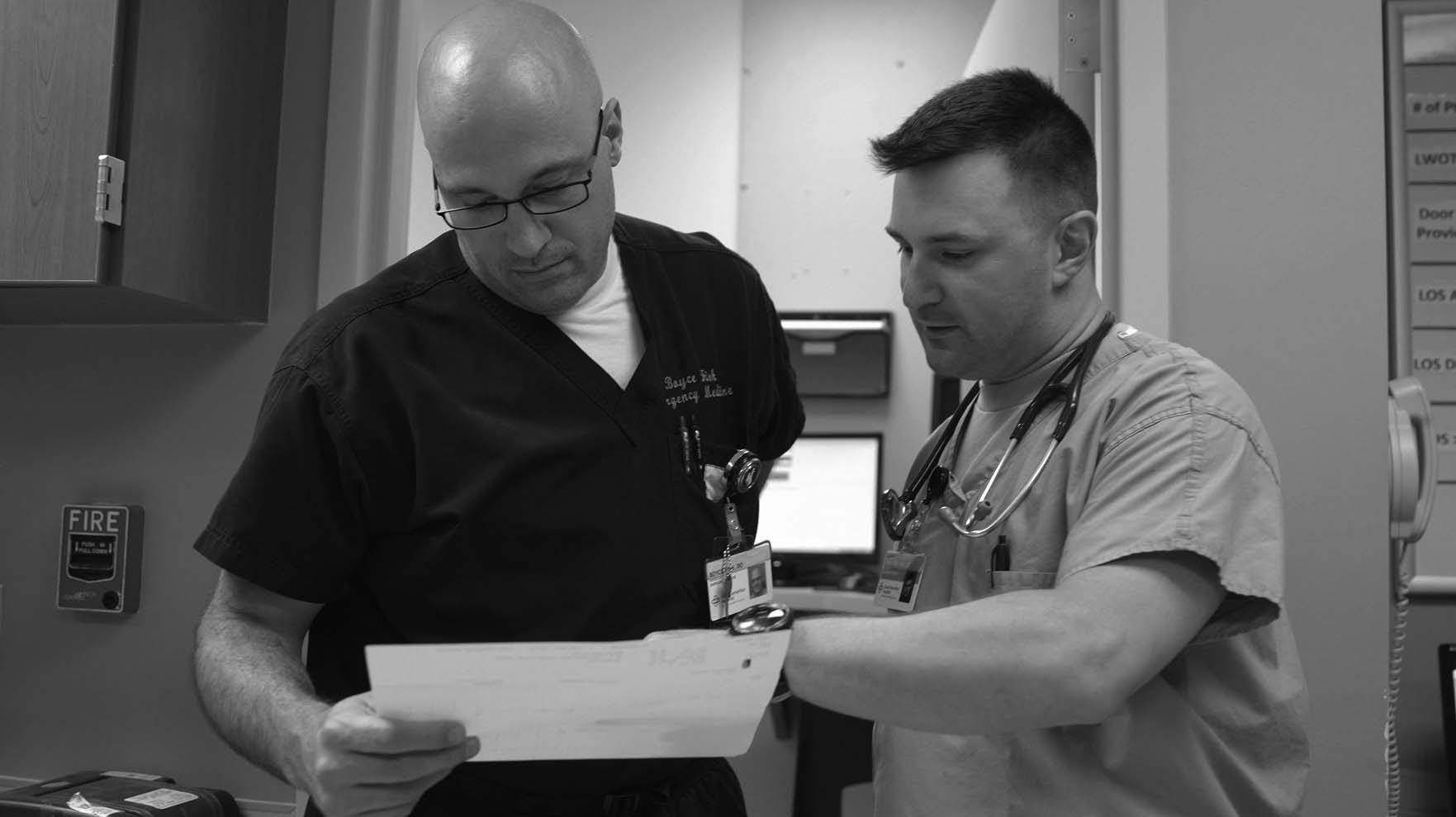- FAQs
- |
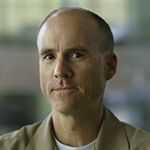
Jonathan Forsberg, M.D., Ph.D.
Orthopaedic Oncologist
- Service Branch: Navy
- Location: Naval Medical Research Center
- Specialty: Orthopaedic Oncology
Navy Commander Jonathan Forsberg, M.D., Ph.D., is an orthopaedic oncologist who heads the regenerative medicine department at the Naval Medical Research Center (NMRC) in Bethesda, Md. When he’s not making breakthroughs in medicine, Jonathan enjoys spending time with his family, and sails competitively with his family and friends.
”Without a doubt, taking care of patients injured in combat has been the high point of my career.“
Navy Commander Jonathan Forsberg, M.D., Ph.D., is an orthopaedic oncologist who heads the regenerative medicine department at the Naval Medical Research Center (NMRC) in Bethesda, Md. When he’s not making breakthroughs in medicine, Jonathan enjoys spending time with his family, and sails competitively with his family and friends.
”Without a doubt, taking care of patients injured in combat has been the high point of my career.“
05:10AM
"I usually wake up at around 5 a.m., have a cup of espresso, check some emails then go over the schedule for the day."
"I usually wake up at around 5 a.m., have a cup of espresso, check some emails then go over the schedule for the day."
05:11AM
"I received this award from the Italian Society for Orthopaedics and Traumatology for an ongoing collaboration. The project involves a worldwide effort designed to estimate the likelihood of long and short-term survival in patients with metastatic cancer."
"I received this award from the Italian Society for Orthopaedics and Traumatology for an ongoing collaboration. The project involves a worldwide effort designed to estimate the likelihood of long and short-term survival in patients with metastatic cancer."
05:17AM
"These books were gifts from my parents. The book in the middle, 'The Principles and Practice of Medicine,' was written by Sir William Osler and is extraordinarily rare. Osler was a giant in the field of medicine. I occasionally flip through them and draw parallels between what physicians wrote about more than a hundred years ago and what we see today."
"These books were gifts from my parents. The book in the middle, 'The Principles and Practice of Medicine,' was written by Sir William Osler and is extraordinarily rare. Osler was a giant in the field of medicine. I occasionally flip through them and draw parallels between what physicians wrote about more than a hundred years ago and what we see today."
09:00AM
Orthopaedic Oncologist At Walter Reed
Jonathan's day is split among three institutions: Walter Reed National Military Medical Center (NMMC), the National Institutes of Health (NIH) and the Navy Medical Research Center (NMRC). He starts his morning at Walter Reed, where he meets with a patient who was recently transferred to the hospital from the NIH after having a hemipelvectomy.
Orthopaedic Oncologist At Walter Reed
Jonathan's day is split among three institutions: Walter Reed National Military Medical Center (NMMC), the National Institutes of Health (NIH) and the Navy Medical Research Center (NMRC). He starts his morning at Walter Reed, where he meets with a patient who was recently transferred to the hospital from the NIH after having a hemipelvectomy.
FORSBERG: Usually my day is split between three institutions — Walter Reed, the National Institutes of Health and also the research lab — Naval Medical Research Center.
I’m an orthopedic oncologist in the Navy, and I specialize in the treatment of tumors of the bones and soft tissues. So this is a typical morning at Walter Reed. I come in, check emails, review the X-rays of any cases that came in over the weekend.
DJ has neurofibromatosis, which predisposes him to certain types of nerve tumors. And he had a very large nerve tumor in his thigh and groin, and it became cancerous and turned into a sarcoma. So unfortunately, the only way we could safely remove the tumor was to do what’s called a hemipelvectomy, which is a very high amputation of the lower extremity. So he’s transferred here to Walter Reed to do his rehabilitation. DJ’s actually the first patient to be transferred from the NIH to Walter Reed for rehab, under a Secretary of Defense special designation. So we’re very excited about that process.
Well, we’ll check in on you every day, and although you’re on the rehab service, my team will check in on you. And if you need anything from me, just let them know and they’ll contact me, no matter where I am. Thanks for letting us come in to talk to him.
FEMALE: Thank you.
FORSBERG: I love to take care of cancer patients. I mean, it’s not for everybody, but I truly feel like I can identify with them, and helping improve their quality of life is very important.
09:21PM
Path To Becoming A Navy Physician
Jonathan talks about the path he took to becoming a Navy physician: it was a circuitous route through the Marine Corps.
Path To Becoming A Navy Physician
Jonathan talks about the path he took to becoming a Navy physician: it was a circuitous route through the Marine Corps.
FORSBERG: I grew up in a little town in Montana, and my father was in the Military, my sister was an Air Force Academy graduate, and there was a strong sense of patriotism in Montana. So after high school I joined the Marine Corps, and as a Marine, applied to the Naval Academy for college. And then after that went to medical school. So I always wanted to be a doctor. Took a circuitous route through the Marine Corps, but I wouldn’t — I wouldn’t trade that for anything.
10:17AM
Orthopaedic Oncology At The National Institutes Of Health
Jonathan enjoys working at the National Institutes of Health (NIH) because he sees difficult cases that can't be treated anywhere else. It also provides him the opportunity to work with other leading experts across multiple specialties.
Orthopaedic Oncology At The National Institutes Of Health
Jonathan enjoys working at the National Institutes of Health (NIH) because he sees difficult cases that can't be treated anywhere else. It also provides him the opportunity to work with other leading experts across multiple specialties.
FORSBERG: So one of the most interesting and unexpected parts about being a military physician is the ability to deal with not only military patients in a variety of settings but also civilian patients. My affiliation with the National Institutes of Health allows me to do that. For many years the National Institutes of Health didn’t have an orthopedic oncologist on staff. I liked to come over here because the cases were all very interesting, investigators over here are the world’s foremost experts in certain types of diseases. So the patients are interesting, the cases are interesting, the procedures are complicated, and I really enjoy that challenge.
12:30PM
Heterotopic Ossification Research
Jonathan speaks more in depth about his research on bone growth in soft tissue.
Heterotopic Ossification Research
Jonathan speaks more in depth about his research on bone growth in soft tissue.
FORSBERG: Heterotopic ossification is bone that forms in the soft tissues. Now, this particular case was a patient without an amputation, but the bone formed right next to his sciatic nerve. Heterotopic ossification is caused, we think, from inflammation in the muscle. We can feel it as we debride the muscle tissue during the debridement process. Before the wound is closed, we can feel the tissues become woody, and that woody consistency is the bone forming in the muscle. And it can be problematic when you consider that the patients with amputations require a socket to bear weight. The end result is patients will sit in a wheelchair rather than be functionally mobile.
01:10PM
Orthopaedic Osseointegration Prosthetic
Jonathan is developing an innovative prosthetic that can attach directly to bone, which will help patients with blast-wound injuries.
Orthopaedic Osseointegration Prosthetic
Jonathan is developing an innovative prosthetic that can attach directly to bone, which will help patients with blast-wound injuries.
FORSBERG: So I have in front of me a prototype, and this prototype is designed to be attached to — attached to the skeleton. And the patient’s skin is here. And we’ve had an opportunity over the last couple of years to develop this porous material and test it in our preclinical model, to ensure that we have adequate blood supply in this area. So by ensuring that we have adequate blood supply to this area allows us to treat an infection with antibiotics, should it occur. We’re very hopeful that this technology will be useful in patients with amputations that are complicated by wound failure and heterotopic ossification.
01:15PM
"This patient had a very severe blast injury and sustained the highest level of amputation of any survivor from the previous two conflicts. Heterotopic ossification, a kind of maladaptive healing response, formed all along his residual pelvis and perineum. This is a model we made from the patient's CT scan using a 3D printer that prints in resin."
"This patient had a very severe blast injury and sustained the highest level of amputation of any survivor from the previous two conflicts. Heterotopic ossification, a kind of maladaptive healing response, formed all along his residual pelvis and perineum. This is a model we made from the patient's CT scan using a 3D printer that prints in resin."
01:40PM
"We use the whiteboard to communicate with our investigators, residents and collaborators, and we use the boards from the protocol development stage to the experimental design stage to the prepublication stage. When we analyze data, I like it to be displayed a certain way and you can see a box plot, some graphs and experimental groups."
"We use the whiteboard to communicate with our investigators, residents and collaborators, and we use the boards from the protocol development stage to the experimental design stage to the prepublication stage. When we analyze data, I like it to be displayed a certain way and you can see a box plot, some graphs and experimental groups."
02:11PM
"One of the most comprehensive assessments of heterotopic ossification was accepted by the journal, 'Bone.' We analyzed heterotopic ossification from the patient featured on the cover and several others to characterize what's going on inside each of those lesions."
"One of the most comprehensive assessments of heterotopic ossification was accepted by the journal, 'Bone.' We analyzed heterotopic ossification from the patient featured on the cover and several others to characterize what's going on inside each of those lesions."
02:34PM
"This is a patient from the National Institutes of Health who had the top part of his tibia resected because it contained a rare bone sarcoma. I reconstructed it with a bone from a cadaver of similar size that had been selected from a bone bank. One can see a point on the side of the bone with three plates and several screws, which are holding everything together while the patient's bone heals to the new bone. He's now cancer free, and he moved back to India with his parents."
"This is a patient from the National Institutes of Health who had the top part of his tibia resected because it contained a rare bone sarcoma. I reconstructed it with a bone from a cadaver of similar size that had been selected from a bone bank. One can see a point on the side of the bone with three plates and several screws, which are holding everything together while the patient's bone heals to the new bone. He's now cancer free, and he moved back to India with his parents."
02:55PM
"Here's a piece of histology from the Raman mapping system. This is a wound biopsy from a combat casualty and we use Raman spectroscopy to interrogate tissue to determine what it's doing on the molecular level. For example, Raman can tell us what types and proportions of collagen are forming and also whether the patient is a risk for the development of heterotopic ossification."
"Here's a piece of histology from the Raman mapping system. This is a wound biopsy from a combat casualty and we use Raman spectroscopy to interrogate tissue to determine what it's doing on the molecular level. For example, Raman can tell us what types and proportions of collagen are forming and also whether the patient is a risk for the development of heterotopic ossification."
03:10PM
"Our Luminex system measures inflammatory proteins. We can profile of all the inflammation that's going on in the body by measuring a series of cytokines and chemokines. We have thousands of samples from hundreds of patients over the last decade. This data allows us to build models to estimate the likelihood of certain complications that will help treat future combat casualties."
"Our Luminex system measures inflammatory proteins. We can profile of all the inflammation that's going on in the body by measuring a series of cytokines and chemokines. We have thousands of samples from hundreds of patients over the last decade. This data allows us to build models to estimate the likelihood of certain complications that will help treat future combat casualties."
04:00PM
Regenerative Medicine At The Navy Medical Research Center
After spending the morning at Walter Reed and seeing patients at the National Institutes of Health (NIH), Jonathan travels to the Navy Medical Research Center (NMRC). He is head of the regenerative medicine department and leads a team of investigators who work to develop treatments to stop the spread of tumor growth in amputees suffering from blast injuries.
Regenerative Medicine At The Navy Medical Research Center
After spending the morning at Walter Reed and seeing patients at the National Institutes of Health (NIH), Jonathan travels to the Navy Medical Research Center (NMRC). He is head of the regenerative medicine department and leads a team of investigators who work to develop treatments to stop the spread of tumor growth in amputees suffering from blast injuries.
FORSBERG: After finishing up at Walter Reed and attending morning rounds, I go to the Naval Medical Research Center to touch base with the basic science team. And they’re engaged in pre-clinical research, benchtop research, if you will. So I’ll meet with them and go over the projects and make sure everything’s on track.
I serve as department head for the Naval Medical Research Center’s regenerative medicine department. So we focus on complications like heterotopic ossification, which is the formation of bone in soft tissues. We focus on wound healing, and we also focus on improving the lives of patients with amputations.
So let’s go take a look at the lab. One of the experiments that’s ongoing right now is to determine whether a nerve injury commonly seen after a blast requires surgical treatment. If the nerve doesn’t recover, it requires surgery to be replaced. If the nerve is going to recover or has the capacity to recover, it’s better off if it were to recover on its own, without surgery.
So the purpose of this experiment is to differentiate between nerves that have the capacity to heal from nerves that don’t. The ultimate goal would be to use this technology to help guide surgical decision-making in the early phases of wound debridements.
One of the biggest benefits of being in the Military is being put into a leadership position relatively early in your career. I’ve had the opportunity to do that, both on the clinical side and on the research side. And this is not something that would happen in the civilian setting until much later in one’s career.
05:15PM
"The girls have a pneumatic rocket launcher they like to play with. It's a little bit of science, a little bit of fun, and I think they respond to that. Compressed air will propel a homemade rocket made out of pink duct tape (it has to be pink apparently) into the sky. One's aim has to be good so that the rocket doesn't land on any cars or anyone. There are several rockets that are sitting on the roof right now."
"The girls have a pneumatic rocket launcher they like to play with. It's a little bit of science, a little bit of fun, and I think they respond to that. Compressed air will propel a homemade rocket made out of pink duct tape (it has to be pink apparently) into the sky. One's aim has to be good so that the rocket doesn't land on any cars or anyone. There are several rockets that are sitting on the roof right now."
05:23PM
"My Ph.D. thesis started out as a collaboration between the Memorial Sloan Kettering Cancer Center and the Karolinska Institutet. I had been exploring ways to estimate the likelihood of survival in patients with metastatic cancer using a variety of machine learning techniques. This work helps guide surgical and medical decision-making in patients with metastatic bone disease."
"My Ph.D. thesis started out as a collaboration between the Memorial Sloan Kettering Cancer Center and the Karolinska Institutet. I had been exploring ways to estimate the likelihood of survival in patients with metastatic cancer using a variety of machine learning techniques. This work helps guide surgical and medical decision-making in patients with metastatic bone disease."
05:25PM
"I was in college racing on an offshore sailing team. Since I was the lowest-ranking guy on the boat, I'm seen here pumping out the holding tanks from the head [toilet], seemingly with a big smile on my face."
"I was in college racing on an offshore sailing team. Since I was the lowest-ranking guy on the boat, I'm seen here pumping out the holding tanks from the head [toilet], seemingly with a big smile on my face."
06:00PM
Spending Time With Family
Despite a busy career, Jonathan still finds time to spend with his family at their home in Bethesda, Md. When he gets home from work, he helps his daughters with their homework then sits down for dinner.
Spending Time With Family
Despite a busy career, Jonathan still finds time to spend with his family at their home in Bethesda, Md. When he gets home from work, he helps his daughters with their homework then sits down for dinner.
FORSBERG: I did get into some civilian medical schools, but my wife and I decided this would be the best course of action, and looking back, I’m convinced that that’s the case. The Military afforded me a world-class medical education, and also the opportunity to be exposed to health care in a variety of settings, not just in this country but abroad, deployed upon ships, in the middle of the desert — I mean, these are very challenging places to deliver health care. It’s great to come home after a long day, obviously. You know, my family’s my support staff, quite frankly. They do so much for me behind the scenes, and they really allow me to be as successful as I can be, knowing that they’re here. I think working as much as I do allows me to maintain a work-life balance on certain days. For instance, on a clinical day, I’m tied to the hospital until the work is finished, period. And on a lab day I get a bit more flexibility to go in between institutions. That still allows me a lot of time to spend time with my family, and I’m grateful for that. So what — what do you think is the difference between all of these numbers?
06:45PM
Home Brew System
Jonathan is a homebrewer, and he invites a colleague over to his house to brew a new lager.
Home Brew System
Jonathan is a homebrewer, and he invites a colleague over to his house to brew a new lager.
FORSBERG: Alright. So everything’s ready. Temperature is — I think the temperature is just right, so we’re going to go ahead and go in.
MATT: Alright.
FORSBERG: Whenever you want. I’ve been doing this for a while. Ten years, maybe. Technology’s changed a lot in that time. Had a chance to accumulate some of this equipment and make some of it from scratch.
MATT: I think the best one that we did was a recreation of the Founder’s Breakfast Stout, which was a dark chocolatey stout. We put it on nitro tap, which was — can’t get it anywhere like that, so.
FORSBERG: Oh, it was great. And Matt and his wife Lindsey got married, and we brewed the beer for their wedding reception. That was a lot of fun.
06:47PM
"I built this temperature control panel while I was deciding whether or not to enter a Ph.D. program. I ordered the parts and found some plans on the Internet, but modified it a little bit to fit my needs. It helps control the mash temperature and automates the process of beer brewing to make it more reproducible."
"I built this temperature control panel while I was deciding whether or not to enter a Ph.D. program. I ordered the parts and found some plans on the Internet, but modified it a little bit to fit my needs. It helps control the mash temperature and automates the process of beer brewing to make it more reproducible."
06:50PM
"These hops are a Father's Day gift from my wife, Dawn. They were planted about three weeks ago and you can see they grow like weeds. I plan to use these for my next IPA."
"These hops are a Father's Day gift from my wife, Dawn. They were planted about three weeks ago and you can see they grow like weeds. I plan to use these for my next IPA."
07:10PM
"The name 'Solsidan' is a Swedish word that loosely translates to 'bright side' or 'sunny side.' It's also the name of a Seinfeldesque comedy in Sweden. Hilarious."
"The name 'Solsidan' is a Swedish word that loosely translates to 'bright side' or 'sunny side.' It's also the name of a Seinfeldesque comedy in Sweden. Hilarious."
07:50PM
"During the race, I felt like our boat speed was good and our tactics were decent. Here we're seen rounding the windward-most mark [green spinnaker] just ahead of another competitor [red spinnaker that has not yet filled]. The spinnakers are used to sail downwind. The smaller triangular jib is used to sail upwind."
"During the race, I felt like our boat speed was good and our tactics were decent. Here we're seen rounding the windward-most mark [green spinnaker] just ahead of another competitor [red spinnaker that has not yet filled]. The spinnakers are used to sail downwind. The smaller triangular jib is used to sail upwind."
08:23PM
Steering A Sailboat
Jonathan talks about his role on the sailboat during the race.
Steering A Sailboat
Jonathan talks about his role on the sailboat during the race.
FORSBERG: I drive the boat, which, you’ll be surprised to hear that that’s the least important job on the boat. My wife is running around on the bow, making sure the sails go up and down properly. And then we had Lexi trimming the sails and calling tactics, and I drive the boat wherever she tells me to drive it, so it’s not a very important job. It looks like it is, but it’s not.
09:00PM
Annapolis Yacht Club Wednesday Night Races
Jonathan loves the technical and physical challenge of sailing and says it's a nice distraction from the stresses of work. He and his wife compete as a team in a weekly regatta at the Annapolis Yacht Club.
Annapolis Yacht Club Wednesday Night Races
Jonathan loves the technical and physical challenge of sailing and says it's a nice distraction from the stresses of work. He and his wife compete as a team in a weekly regatta at the Annapolis Yacht Club.
FEMALE: Thinking about the wind tonight, with the storms coming.
FORSBERG: Yup.
FEMALE: So the question is, if the storms go north of here, if we’re going to have any wind or if we’re going to have a lot.
FORSBERG: Do we have Lexi and Imre?
FEMALE: We do.
FORSBERG: OK, great.
FEMALE: So we’re good on —
FORSBERG: I think we’re going to go to the north, so I think there’s going to be a breeze.
We’ve been doing Wednesday night races for about six years now. A lot of camaraderie in the fleet. It’s like therapy. You get out on the water, you forget about the stresses of the week, you relax, you’re with your friends, competing against world-class sailors — it really is a nice distraction from the stresses of work. I love it. Love the challenge. It’s technically demanding, physically demanding. We live in a perfect place to sail — Annapolis is the sailing capital of the East Coast, although Newport’s a close second.
Yeah, it didn’t go as well as expected, but that’s sailboat race, and we got caught on the wrong side of the course when the breeze filled in. But I felt like our boat speed was good, tactics were decent, but, you know, we sail against a bunch of great sailors. You know, they’re master’s champions, they’re North American champions, so I think we did well. Yeah, we had a really good time, and that’s the whole point. You know, we come out here to blow off steam and to sail with our friends and family.
5 PHYSICIANS. 24 HOURS.

